Looking for animals that start with M? You’re in the right place! We have a long list of all sorts of animals that start with the letter M!
While the complete list of animals beginning with M is exhaustive, we decided to create this blog post with many fascinating, remarkable, cute, quirky, massive, and fast creatures, from mammals to reptiles.
You will learn many exciting things about these animals that begin with M, so if you’re looking this up to help you with a school project or homeschool your kids, you’re in the right place.
Have we missed your favorite animal that starts with the letter M? Then let us know in the comments!
Animals That Start With M
Here are some of the most exciting animals that begin with the letter M.
Mute Swan
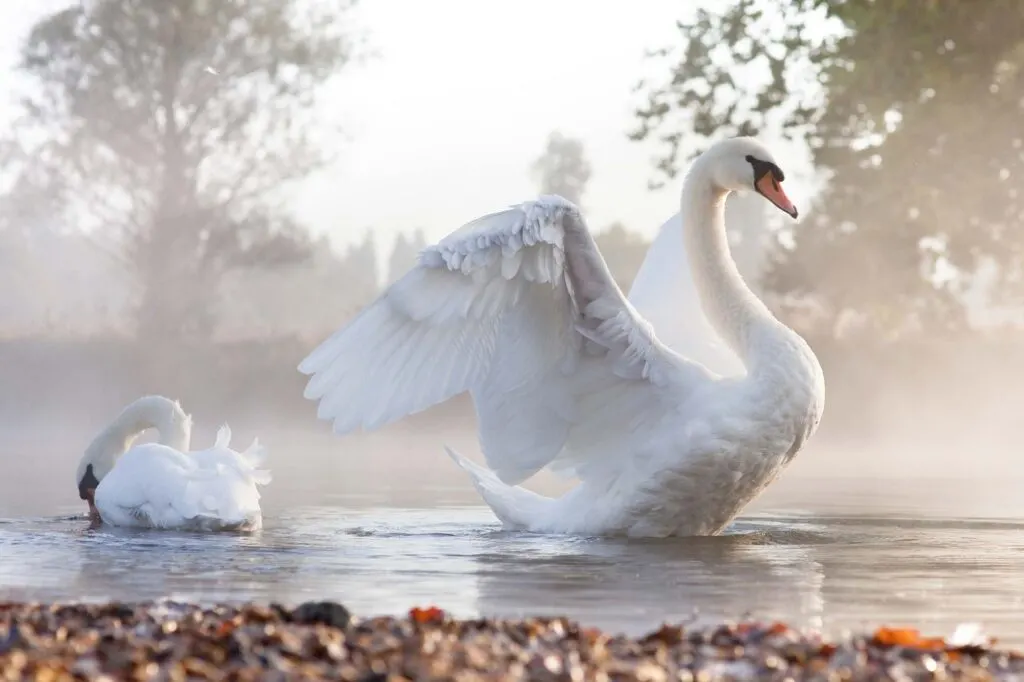
The mute swan is a species of swan who, while not mute, isn’t as vocal as the other members of the species.
They’re white from top to bottom, except for their beak, which is orange with black borders. They have a slow wing beat.
Curiously, mute swans are one of the biggest birds on the planet!
Mountain Lion
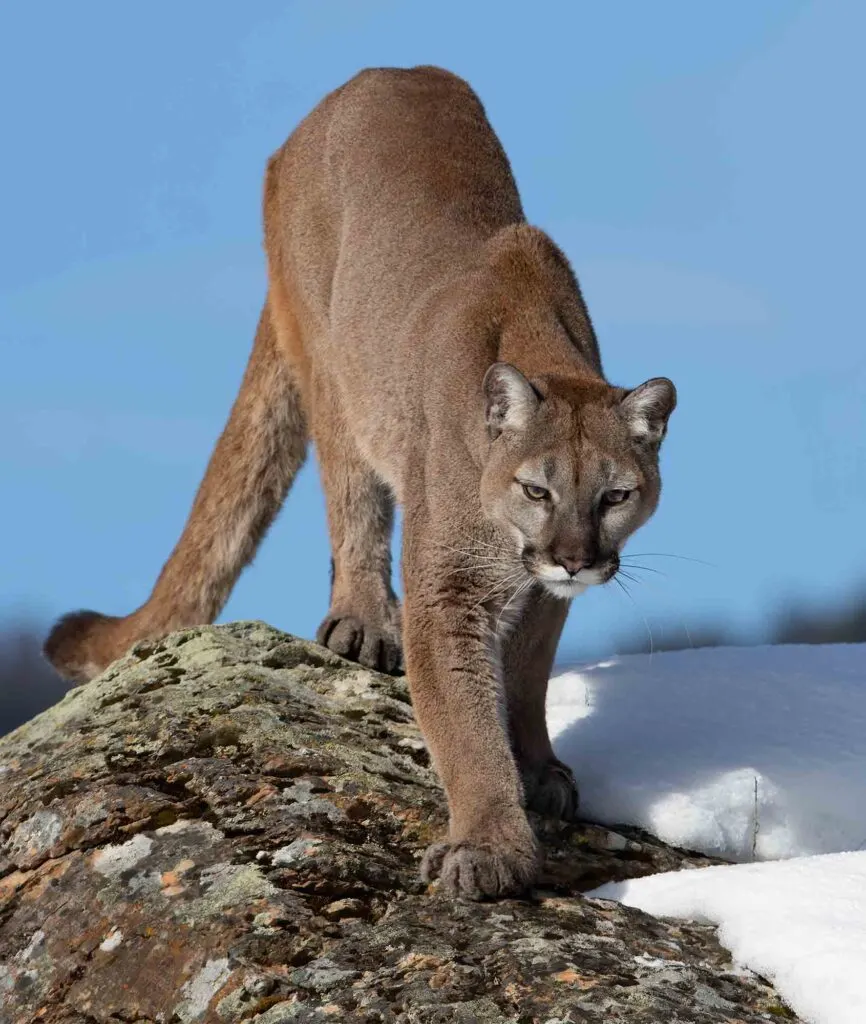
Mountain lions, pumas, or cougars, the lion species with different names, have blue eyes.
These big cats stalk and keep an eye on their prey at a distance of 50 feet. Agile to the fullest, they run at a speed of 50 mph, making them one of the fastest land animals.
Mountain Zebra
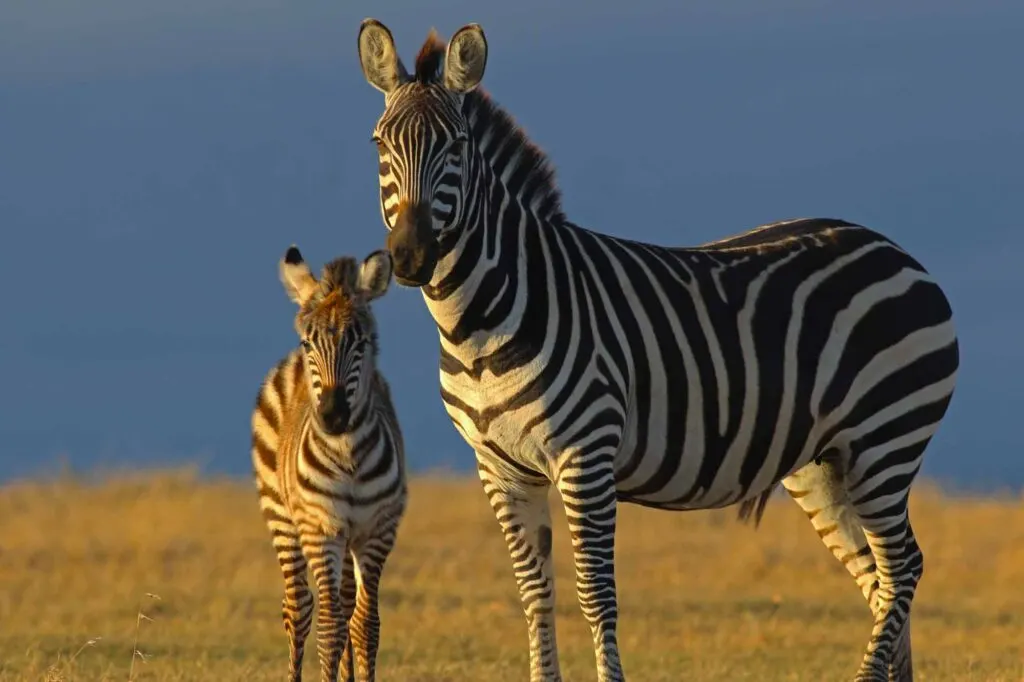
Mountain zebras are native to Africa and roam the mountains, as their name suggests. They measure around 4.5 feet in height with a length of 7.3 feet.
Manes of hair are found on the back of their head, ending at their neck. They have classic white and black stripes of zebras.
Macaroni Penguin
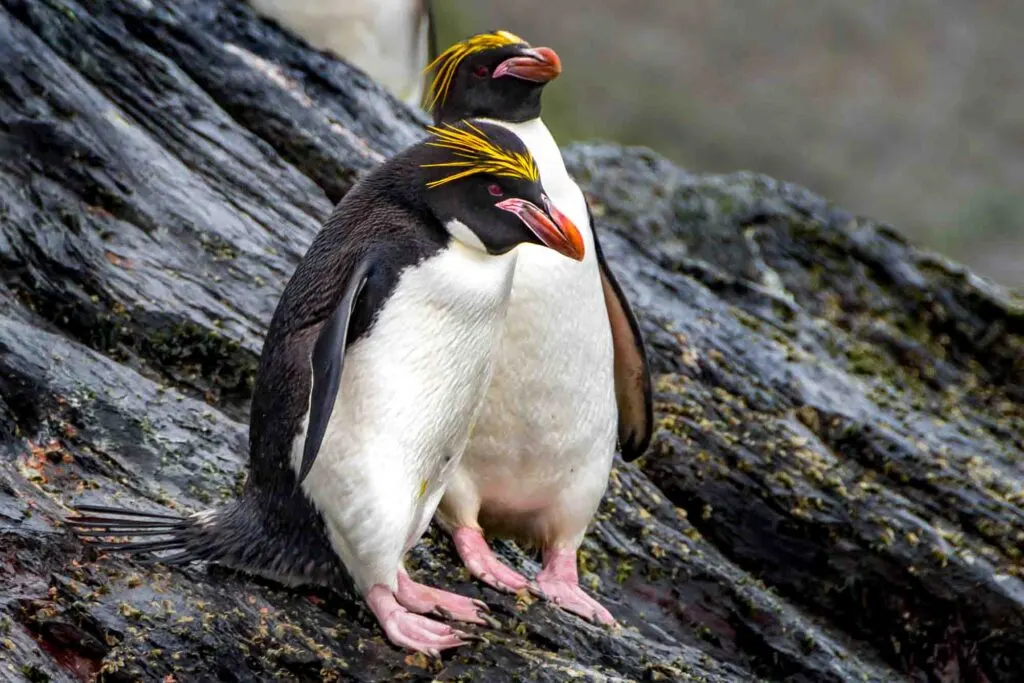
Macaroni penguins are so closely related to royal penguins that many consider them the same species.
They hop and waddle to move from place to place. This type of penguin, which is an honorable entry on our list of animals that start with M, can hold its breath for as long as three minutes.
Military Macaw
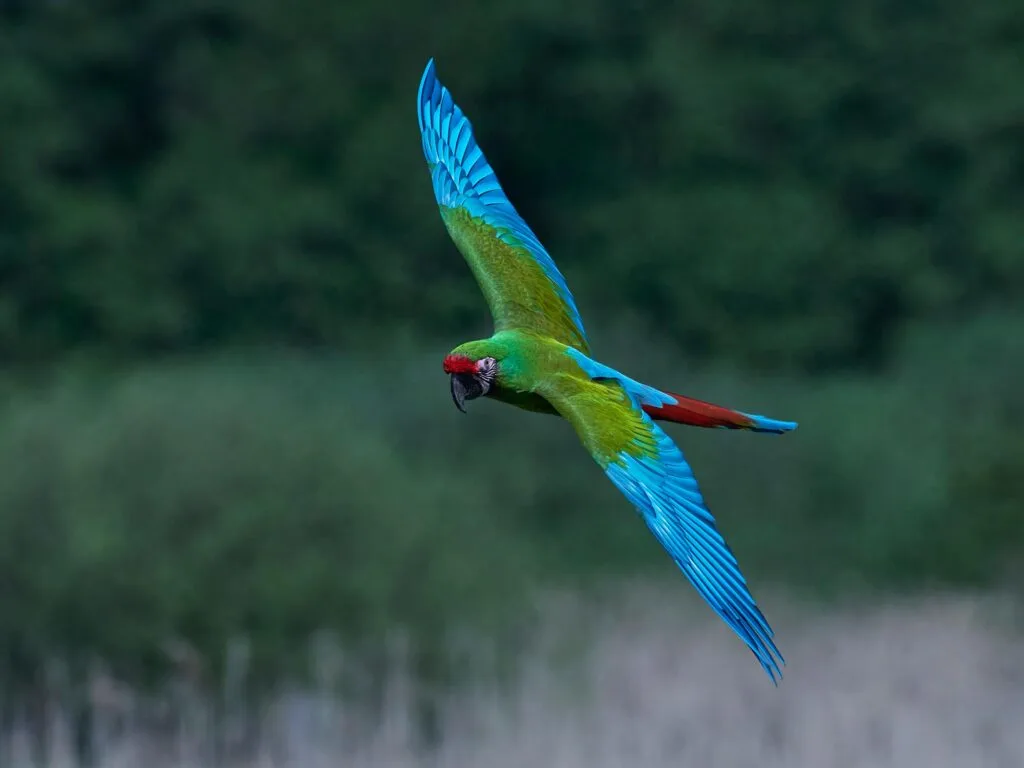
Military macaws are both parrots and macaws, large for the former and medium-sized for the latter.
Their name comes from their plumage resembling a military uniform, which is mostly green. They are about 27.6 inches.
Margay
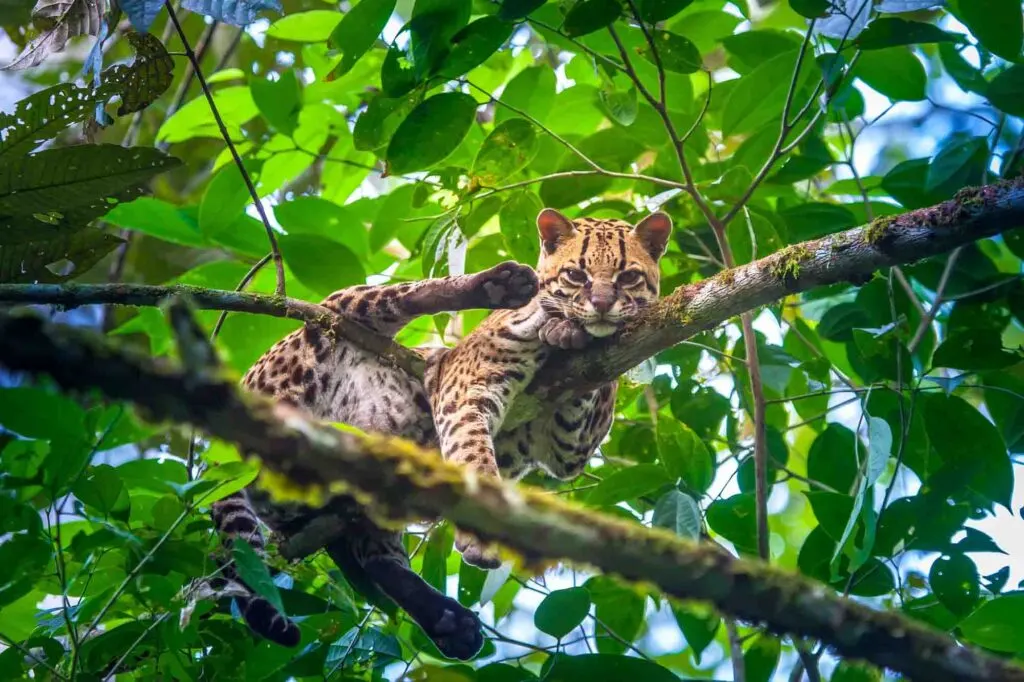
Wild cats distributed over Central America and South America, margays have flexible ankles that allow them to climb straight back down from the trees.
They can also hang off branches using one of their back feet, much like a bat. They even chase monkeys.
Maghreb Magpie
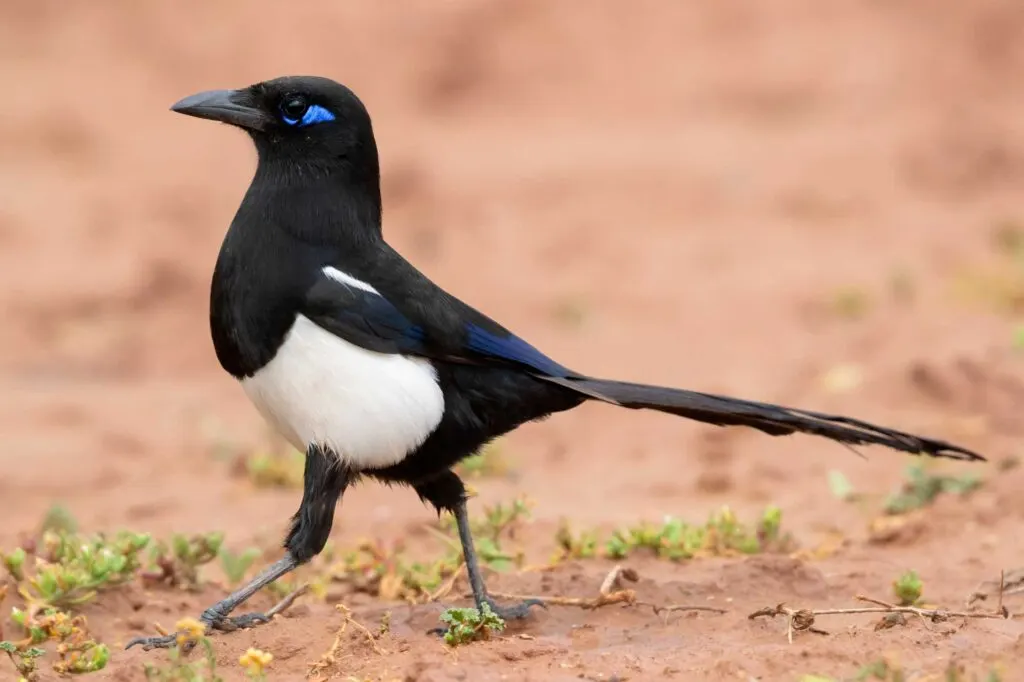
Maghreb magpie is a bird species with a white belly on an otherwise black body, blue wings, and a patch of blue behind its eyes.
They’re spotted in North Africa, specifically from Morocco to Tunisia. They’re considered bold and intelligent.
Marbled Cat
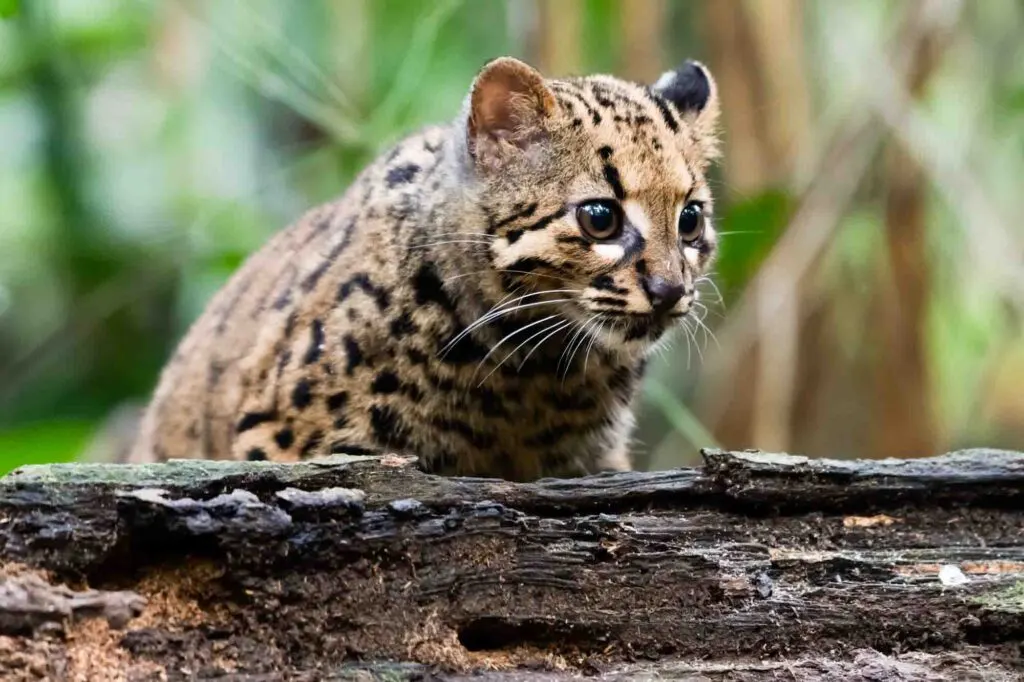
Near threatened on the IUCN list, marbled cats move around in trees owing to their bushy tail, which gives them balance.
Their tree climbing session starts as young as two months old. As Asian wild cats, you’ll mostly find them in Southeast Asia or the Himalayas.
Musk Lorikeet
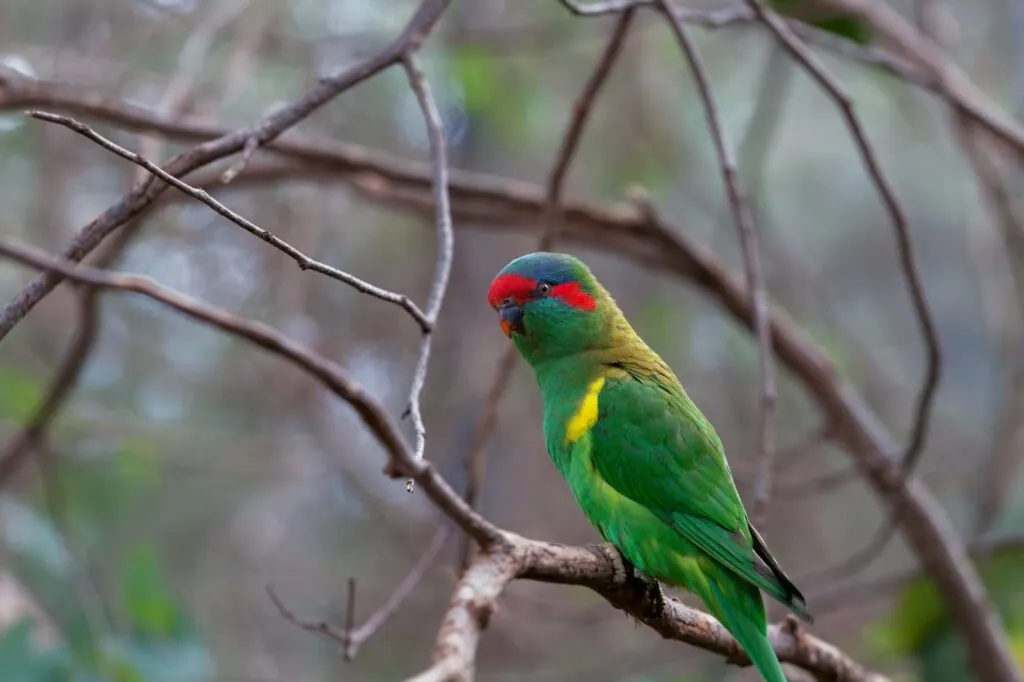
Musk lorikeets mainly live in eastern and central South Australia. They stay in huge flocks, often consisting of more than 100.
The flock might have other species of parrots, and they don’t mind socializing with their cousin species. They tend to stay close to eucalyptus trees.
Mandrill
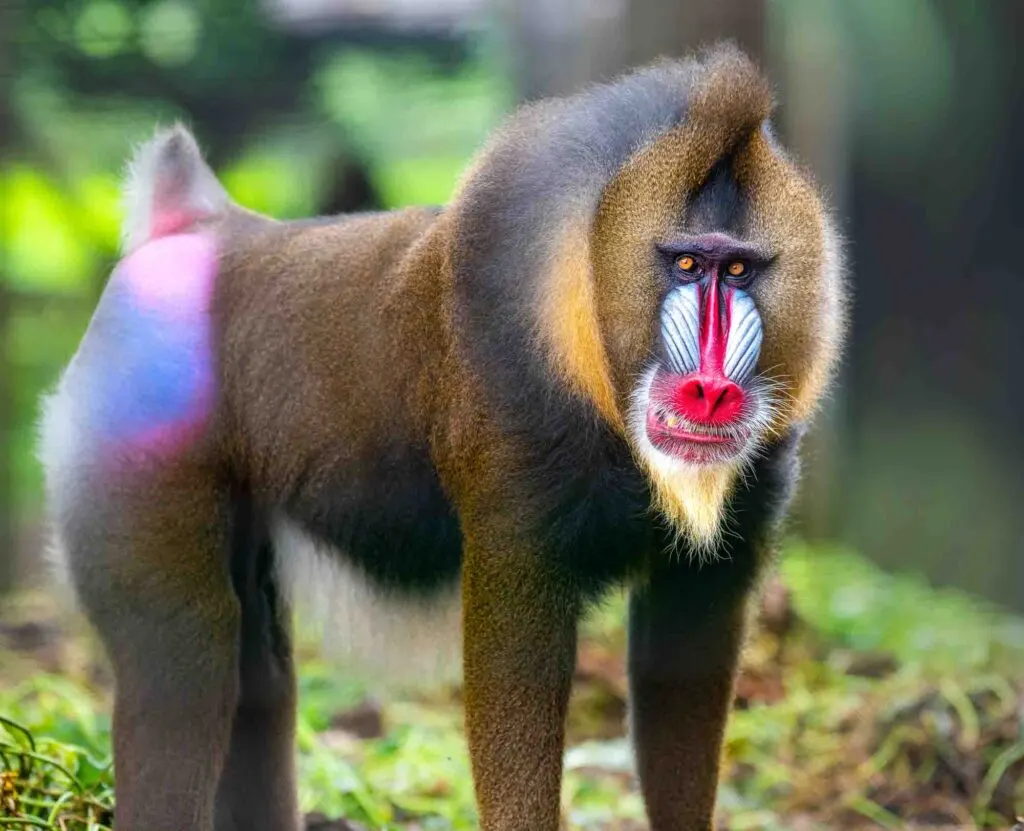
This Old World monkey species also happens to be the largest monkey living in the world.
They inhibit the rainforest of Africa, mainly in the equator region. They sleep on trees, selecting a separate one every evening. They have a red mouth and nose.
Maned Wolf
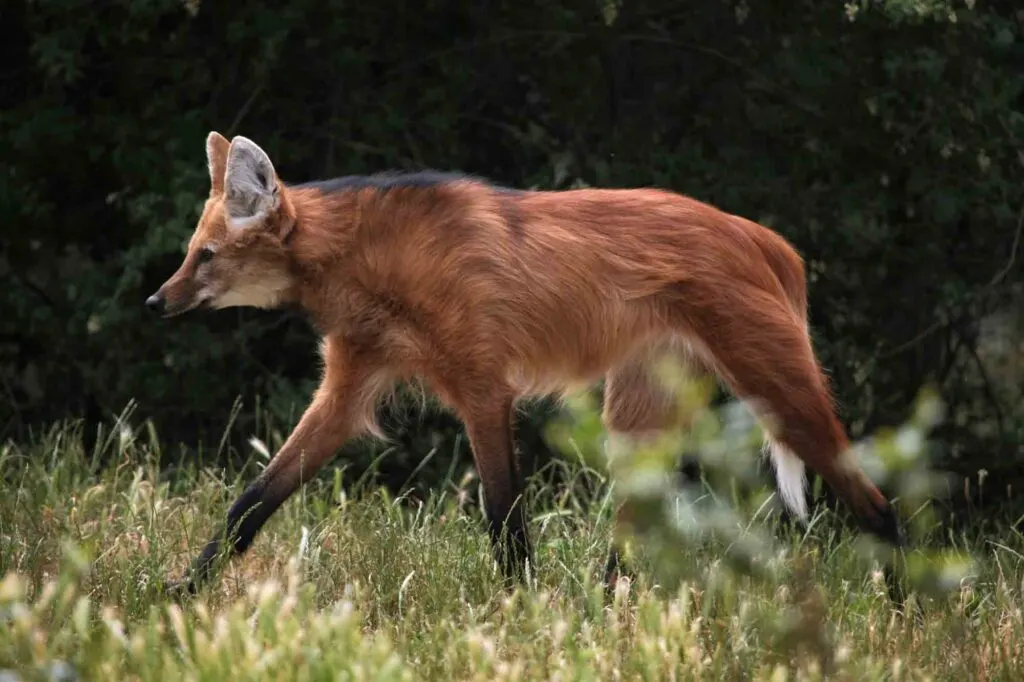
Nor a wolf nor a fox, the maned wolf resembles both. The unique species inhabit South America and are the largest canine on the continent.
They’re about 50 pounds, standing 3 feet up to their shoulders. Their urine has a strong smell, almost like that of skunks.
Munk’s Devil Ray
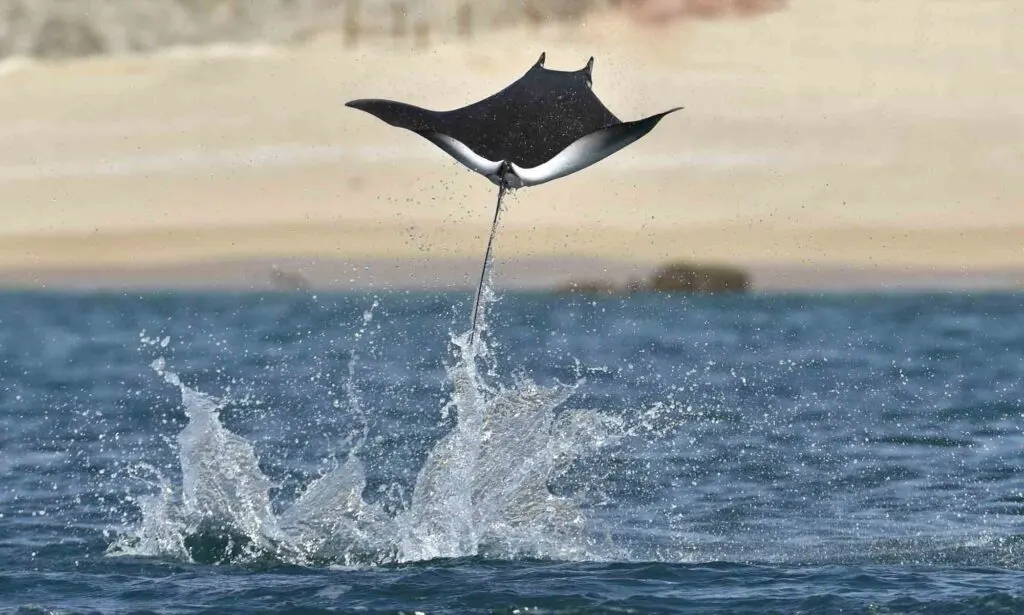
Contrary to their namesake, this species of rays are completely harmless.
They can dive at a speed of 13 mph, which means they’re some of the fastest divers in the ocean.
When they come to the surface, they perform all kinds of acrobatics, including high jumps and belly flops.
Marine Toad
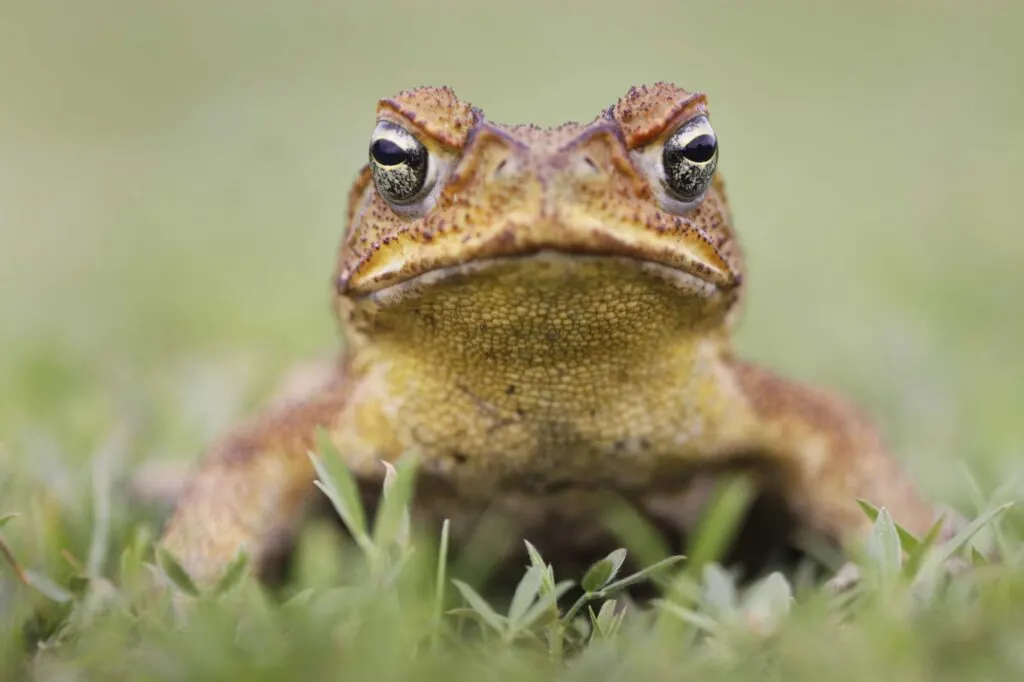
Marine toad is unique to the toad species in that they don’t track the movement of their prey. Instead, they will feed upon anything small that’s stationary.
They’re the only amphibian species that feed on plant substances even after becoming adults.
Markhor
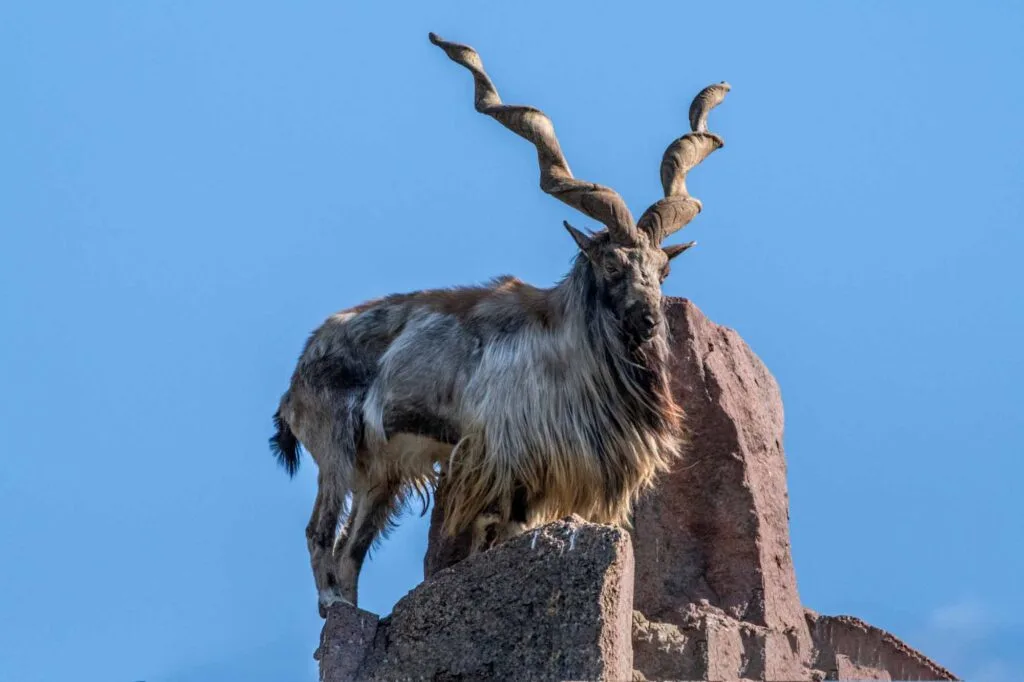
The national animal of Pakistan, from the animals that start with M, this species is unfortunately near threatened.
In Pakistan, they’re also called screw-horned goats. While they’re a Capra, their horns twist and turn upward from their head, earning them the name.
Marsh Frog
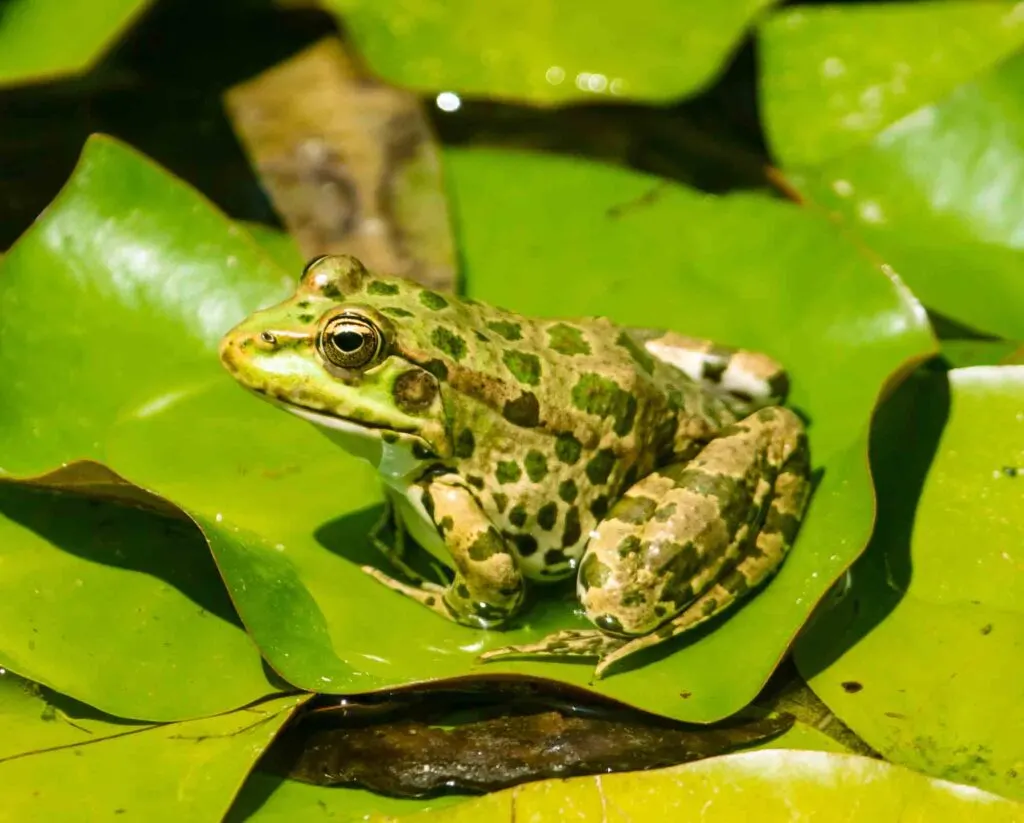
The largest native frogs in Europe, marsh frogs weigh about 0.5 oz. They run at the speed of 5 mph and retreat back into the water at the first sign of danger.
Winter is spent hibernating, while summer is for gathering food day and night.
Masked Palm Civet
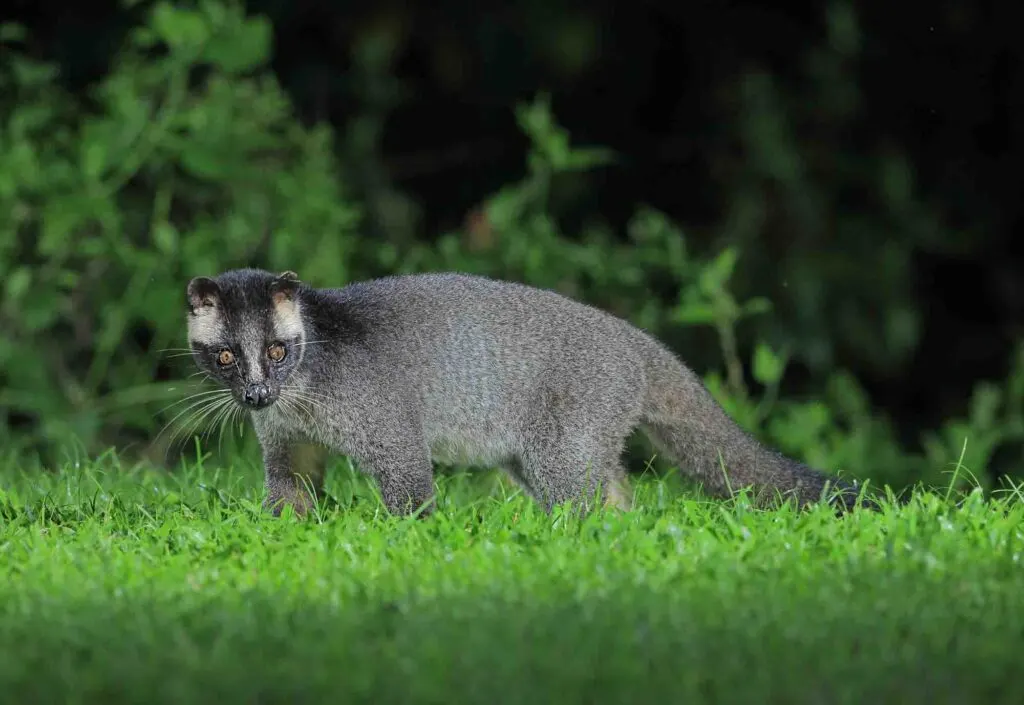
Masked palm civet is a species of palm civet spotted in South East Asia and the Indian subcontinent.
The species build a nest at the tallest height of a tree and sleep there. They’re solitary animals by nature and spread a scent that helps them detect predators.
Mahi Mahi
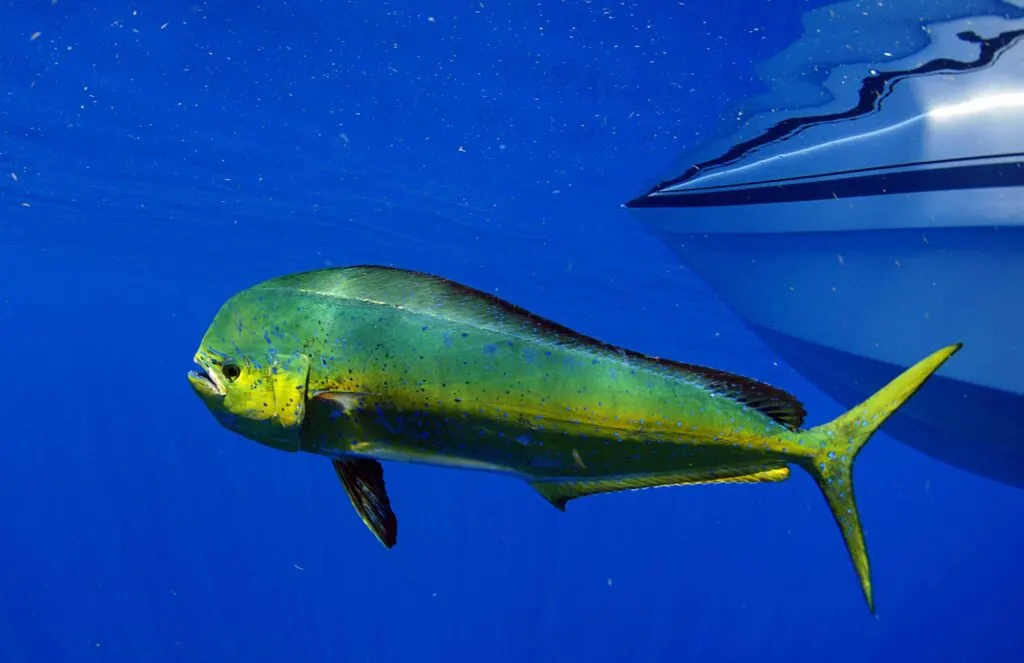
Mahi Mahi is a ray-finned fish known as common dolphinfish too. They’re about average size, green in color, and yes, they do look like dolphins.
They also have a bit of gold on their belly, earning them the name of dorado in Spanish. They’re high-speed swimmers, moving at 60 mph.
Meerkat
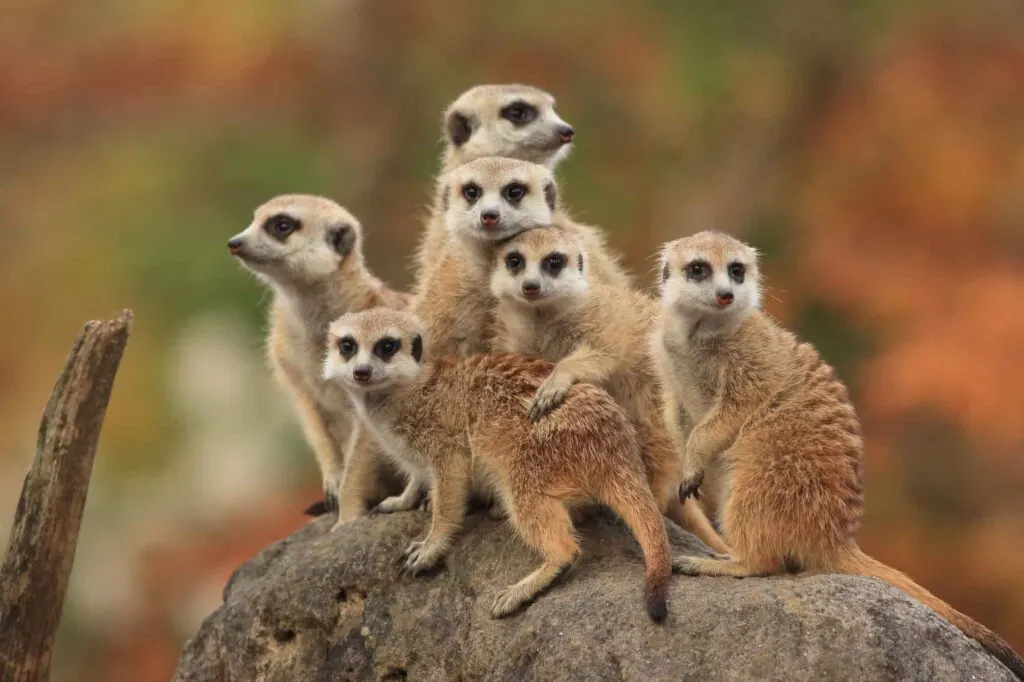
Meerkats are small mongooses of South Africa. They’re pretty popular in the media because of the way they stand with their hands and legs brought close together.
They have a thin tail, big head, pointed snout, and large eyes. Their legs are pretty tall too.
Mandarin Duck
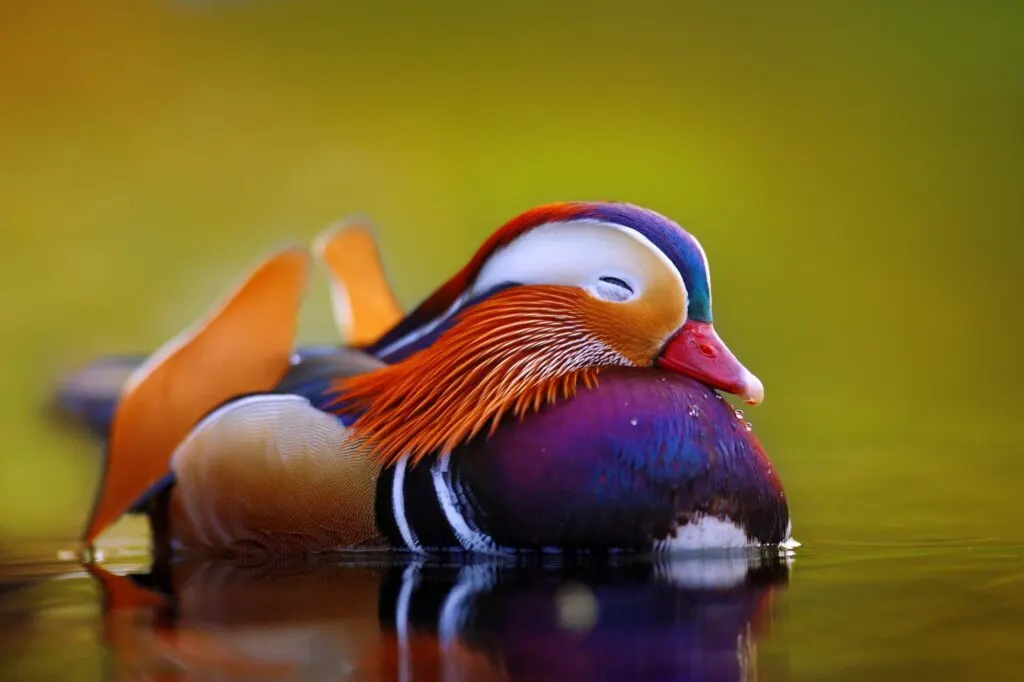
The mandarin duck is one of the most colorful duck species. You can spot almost all the rainbow colors on their body.
They’re social creatures who take off in large flocks during winter. If they live, they come back to the same mate every breeding season.
Mulga Snake
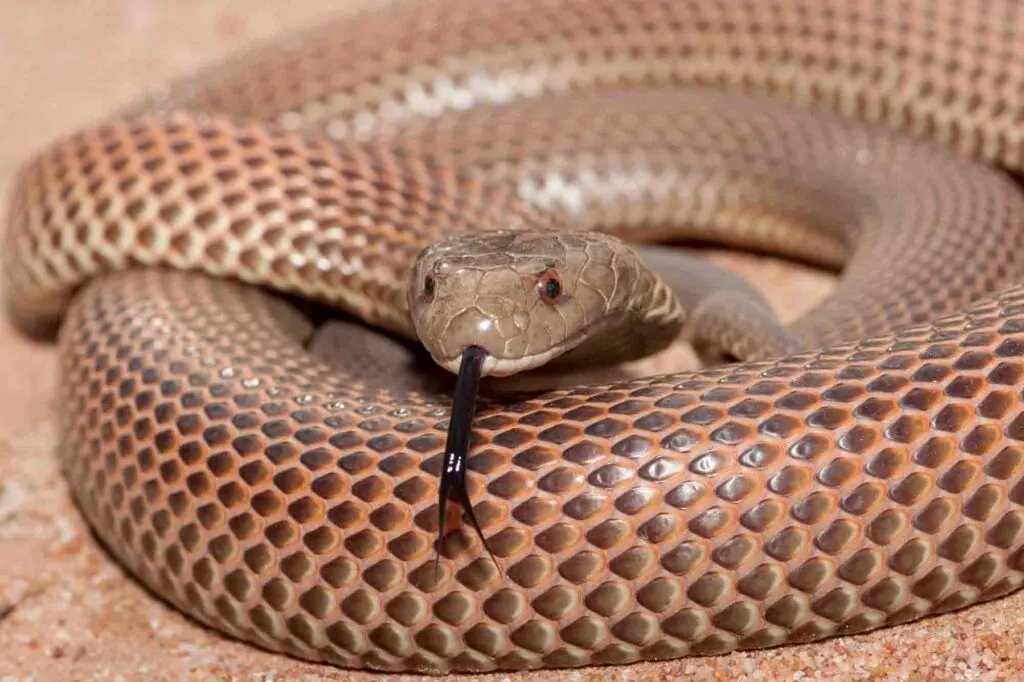
Mulga snake, also known as king brown snake, isn’t actually that close to the true brown snake in relation.
They can range from 5 to 10 feet in height. This species comes out at dusk rather than day or night.
Monarch Butterfly
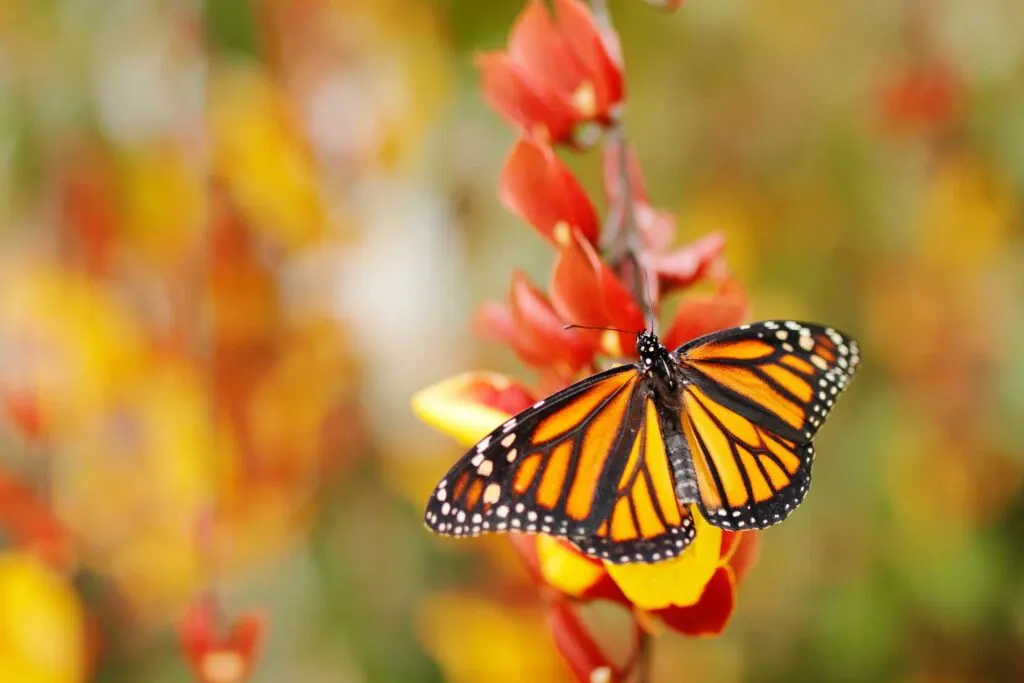
Among the animals that start with M is the monarch butterfly, whose scientific name is Danaus plexippus. The name means sleepy transformation in Greek.
This species flaps its wings about 5 to 12 times per second. This is a far cry from other butterflies, who at least do it 20 times per second.
Mallard Duck
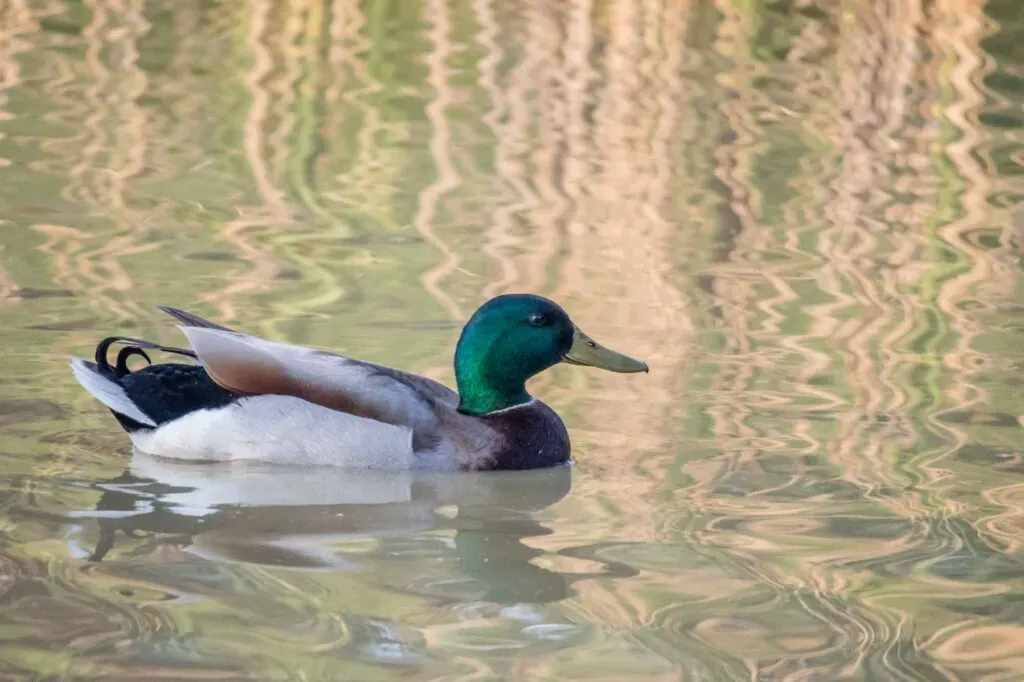
Mallard or wild ducks have an extremely short lifespan, barely lasting two years. However, some have managed to surpass the curse, reaching 16 years.
When they swim, their tail is visible over the surface. If they’re startled, they leap straight out of the water into the air.
Mangrove Monitor
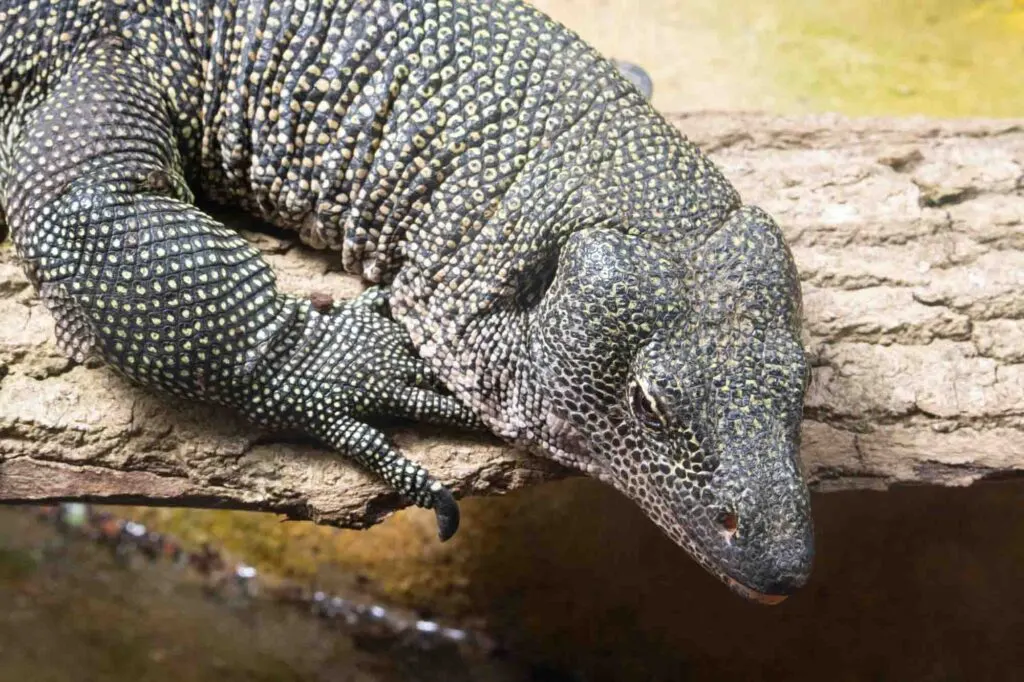
Mangrove monitors are interesting for monitors. They have the same ability as snakes, where they can unhinge their jaw enough to consume huge prey.
They reach about 4 feet with a penchant for consuming anything meat. Like most dangerous predators, they’re solitary creatures.
Monte Iberia Eleuth
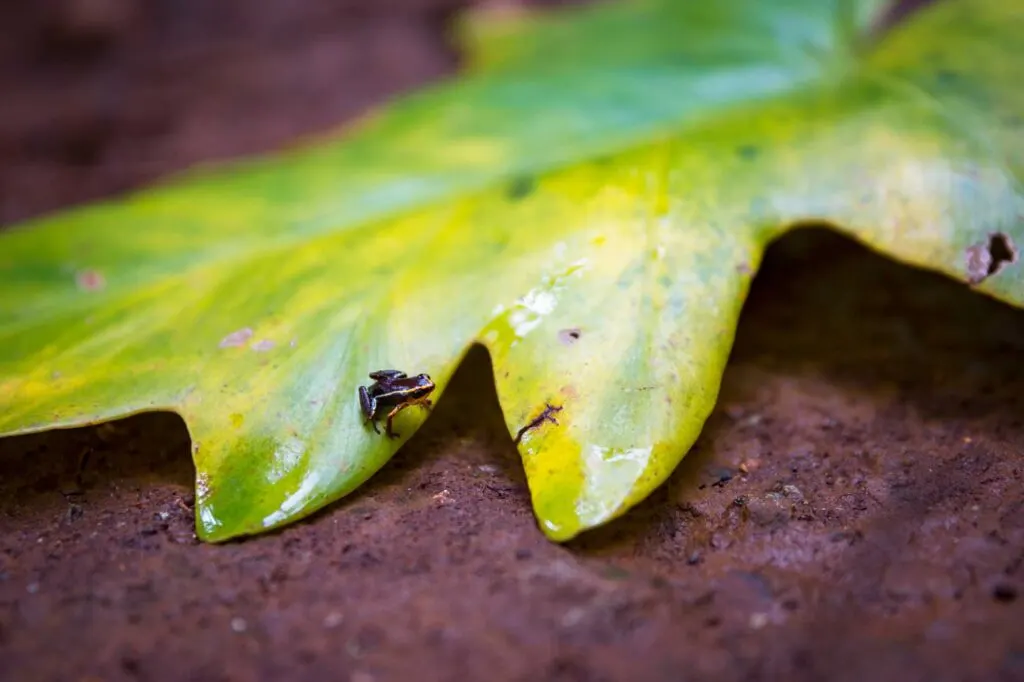
The critically endangered species of frog is spotted in the rainforests of eastern Cuba.
They’re the smallest frog species in all of the Northern Hemisphere. In fact, they’re about 0.4 inches, fitting in at the tip of a human finger.
Miami Blue Butterfly
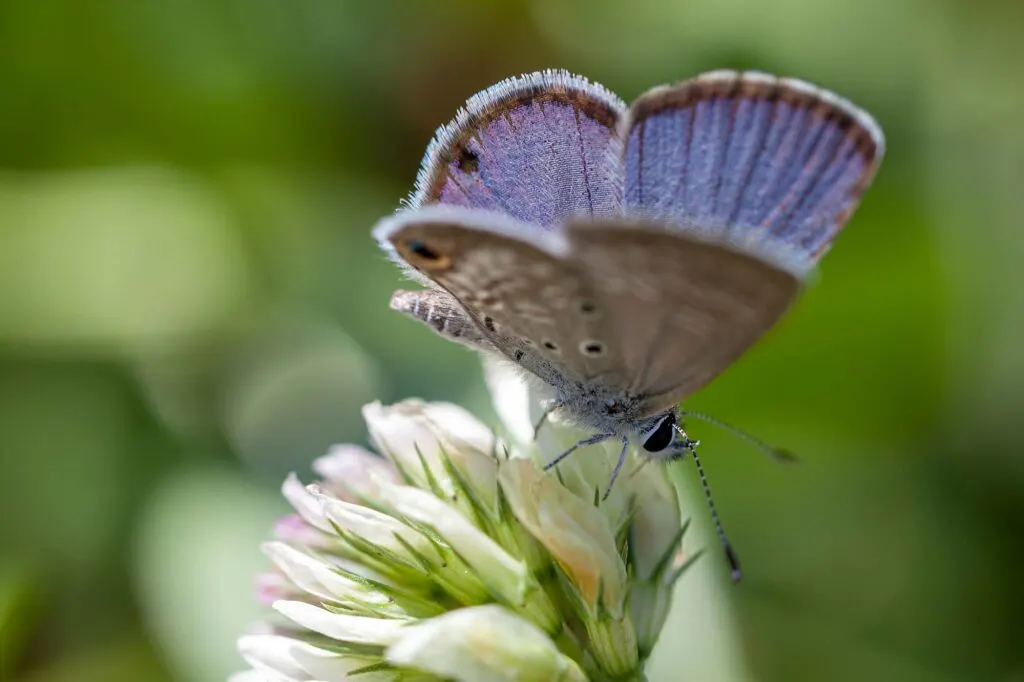
A blue butterfly native to southern Florida, the mystery behind the name is no mystery. The forewings are small, barely 0.5 inches.
They used to be a common species, now sadly pushed into the category of critically endangered.
Moose
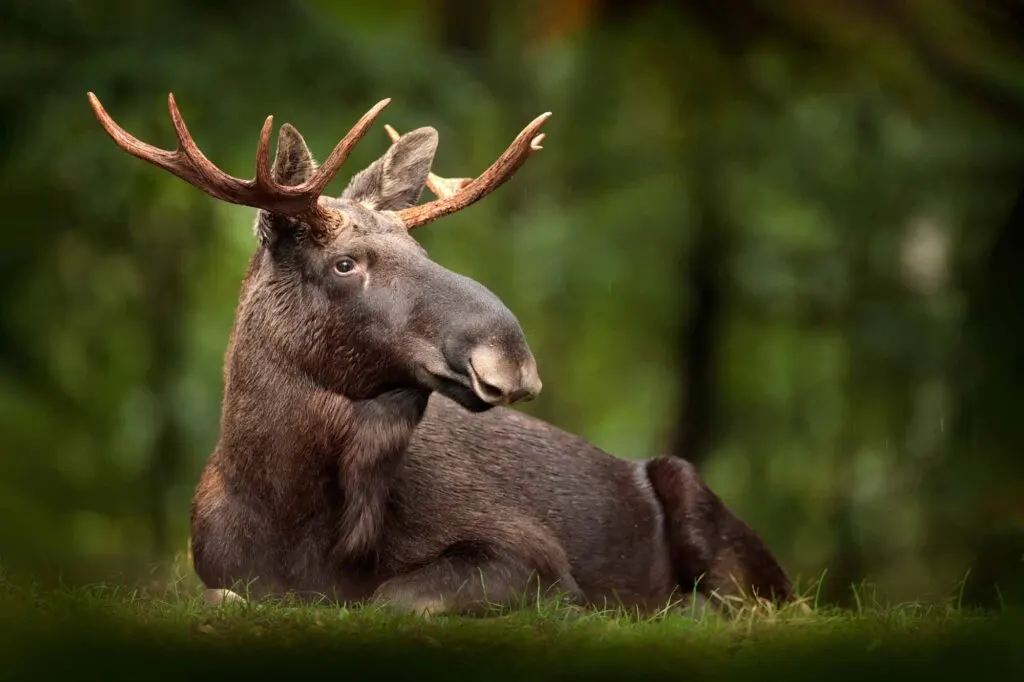
Moose or elks are New World deers. They’re about 6 feet in height, at least the tallest ones, making them as tall as humans.
Their eyesight is famously bad, along with color blindness. However, they compensate for it through their developed sense of smell and hearing.
Mediterranean Moray
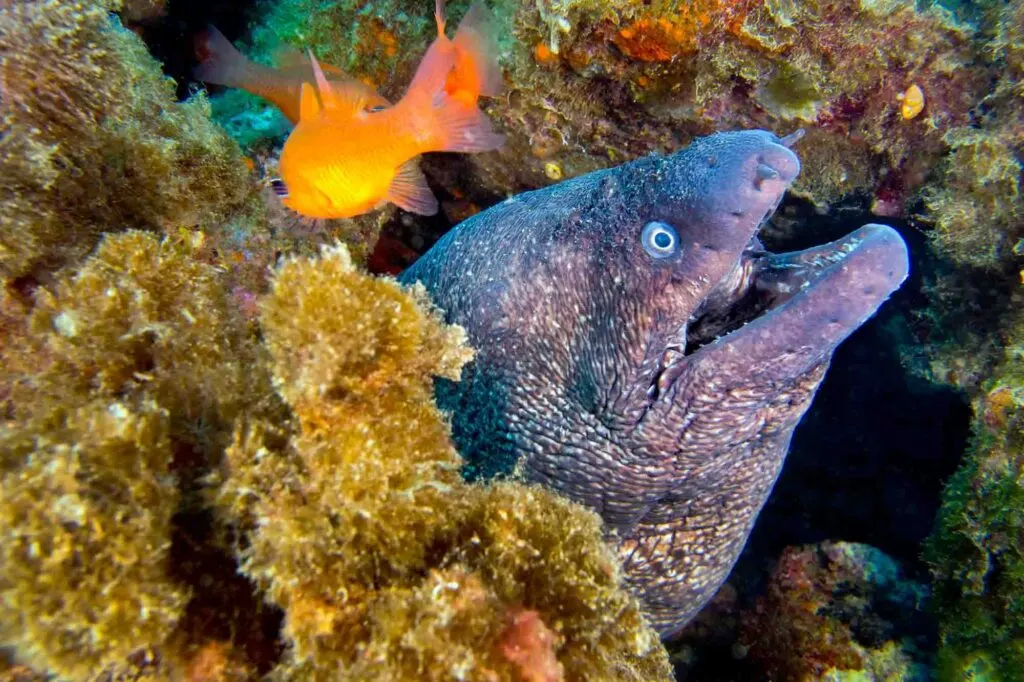
The Mediterranean moray is a fish species belonging to the moray eel family. They aren’t venomous.
However, their bite can cause infection and loss of limbs. As another one of the animals that start with M and poor eyesight, Mediterranean moray relies on their sense of smell.
Mountain Bluebird
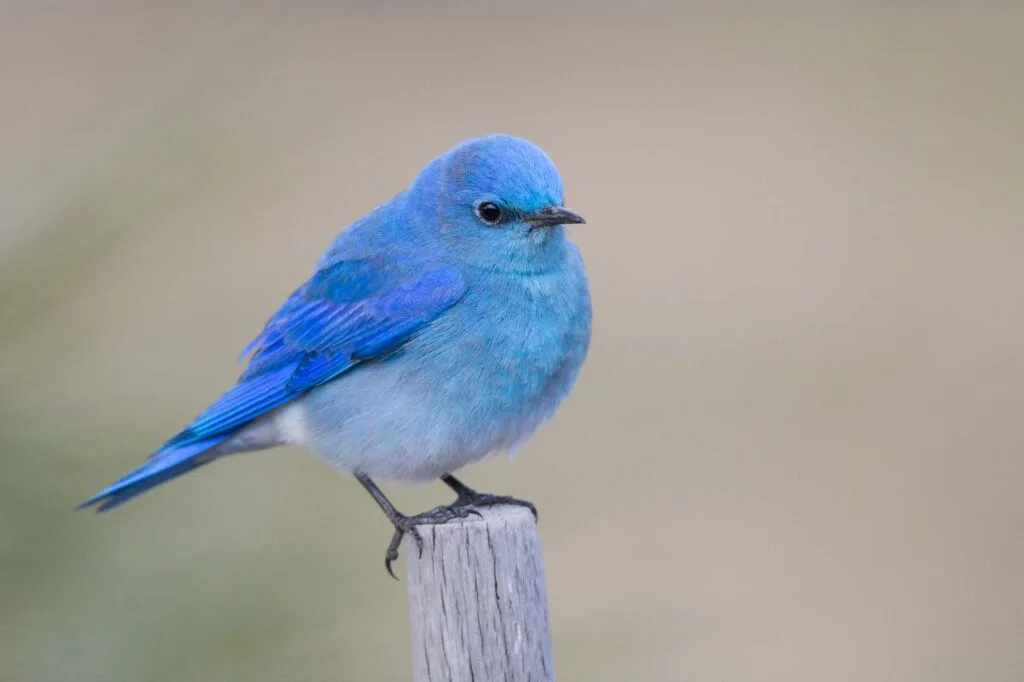
Belonging to the thrush family, mountain bluebirds are found in the mountains of Western North America.
They have a turquoise body, with the depth of shade varying on different parts of the body. The Navajo people consider them a harbinger of spring or at least a sign of spring approaching.
Mustached Tamarin
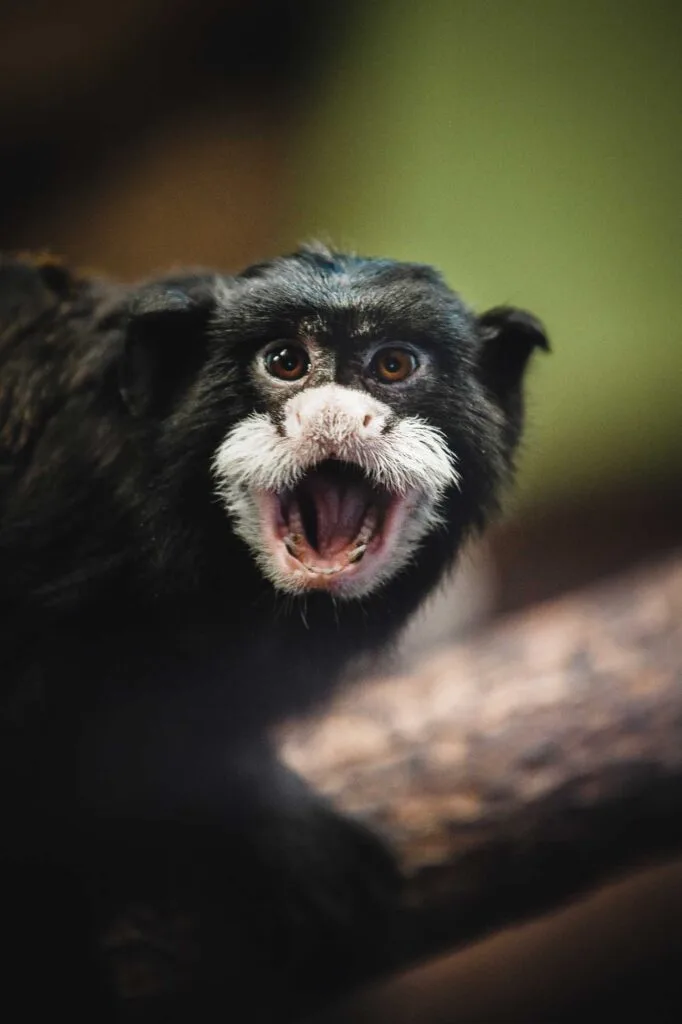
The mustache tamarin is a New World Monkey.
They have large eyes, a black body, and a bit of white surrounding the area of their mouth. Since it looks like a mustache, it became the source of their name.
Mule Deer
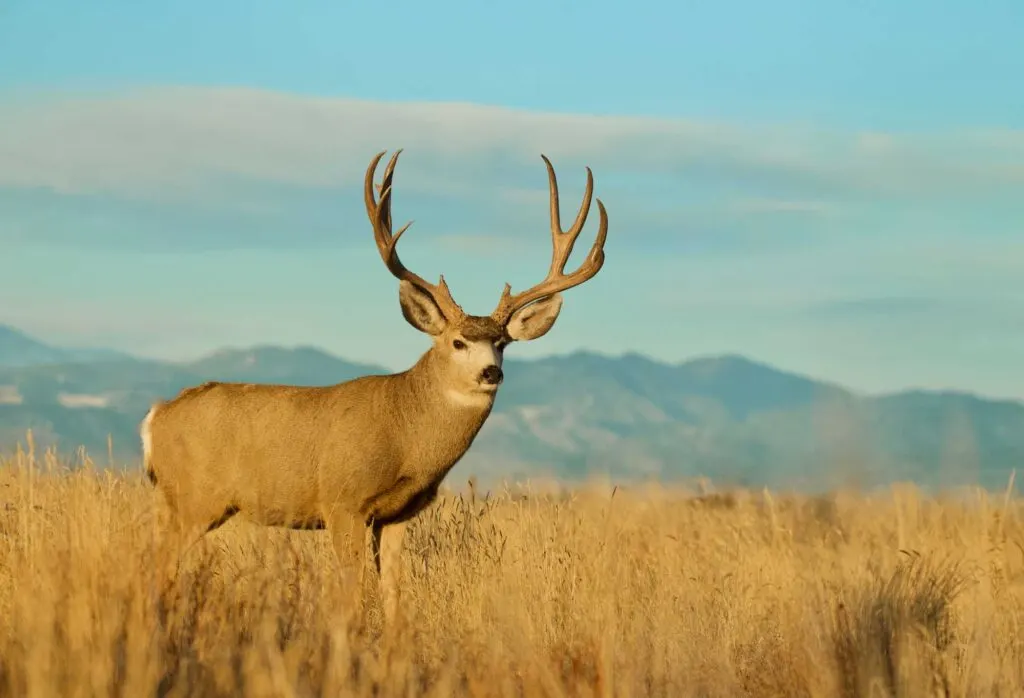
Deers of western North America, mule deers have ears similar to that of mules, thus the story of their name.
Their eyes are to the side of their head rather than the center. This means they have 310-degree vision.
Muskrat
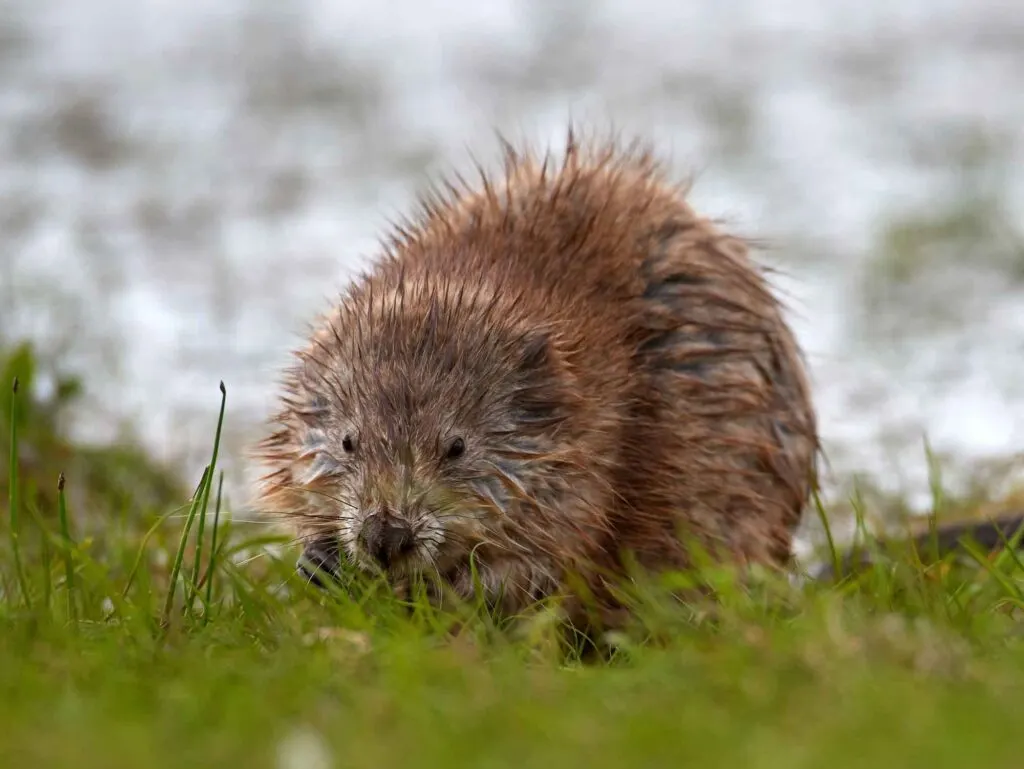
Muskrats are rodents as adept on land as in the water. They can stop breathing for 20 minutes underwater.
They also have webbed feet and a flat tail, allowing them to swim with ease. Their kids are blind and hairless at birth.
Mazarine Blue
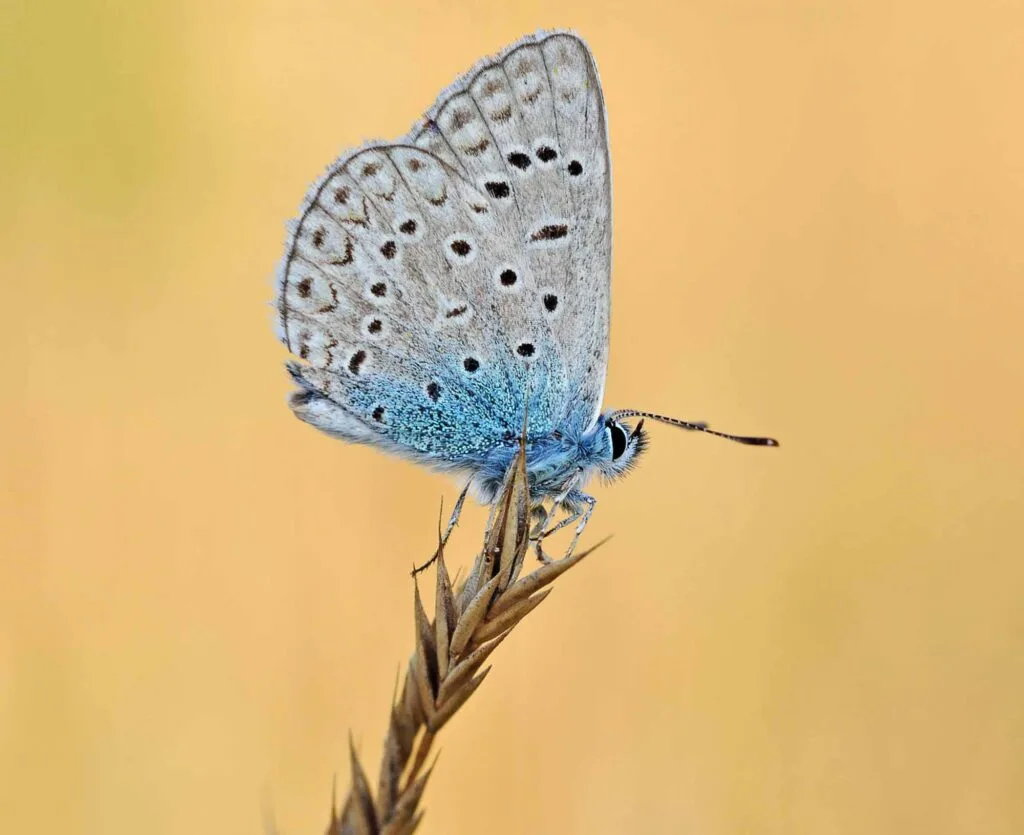
Mazarine blue butterflies are small butterflies that flutter around grasslands and meadows.
They have brown color as the base on their body, overlaid with purple-blue. Their wings are bordered by white color. The purple-blue is the reason their name is mazarine blue.
Marigold Lorikeet
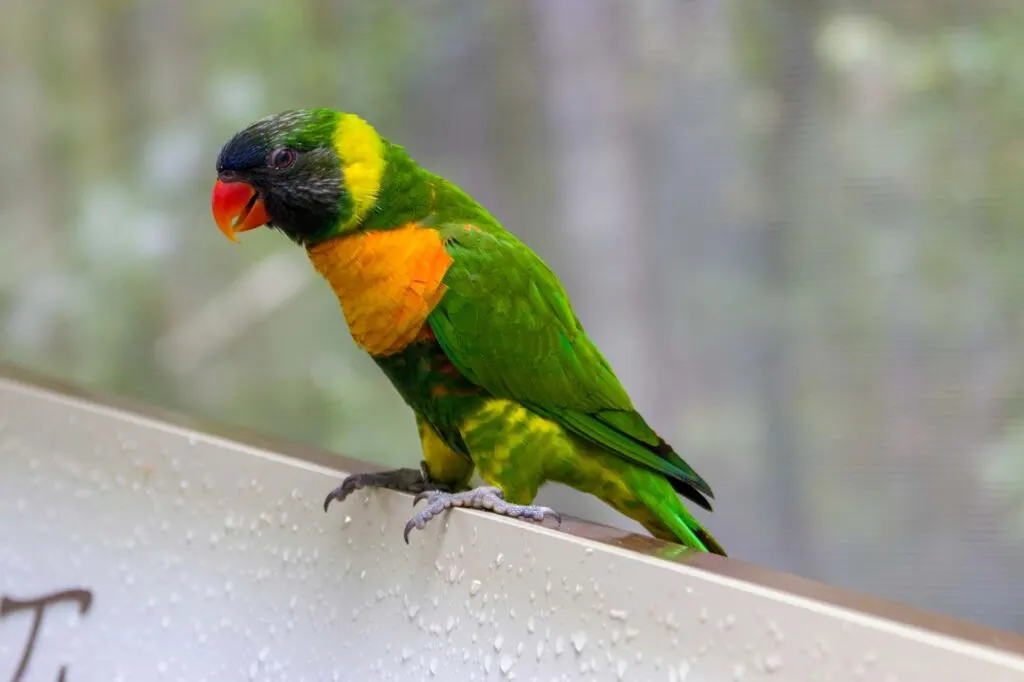
The marigold lorikeet is a species of parrot noticed in Southeast Asia.
They have a green body, black head with a red beak, and most importantly, the marigold color on their belly. While a common species, the distribution is limited to certain islands.
Man of War Jellyfish
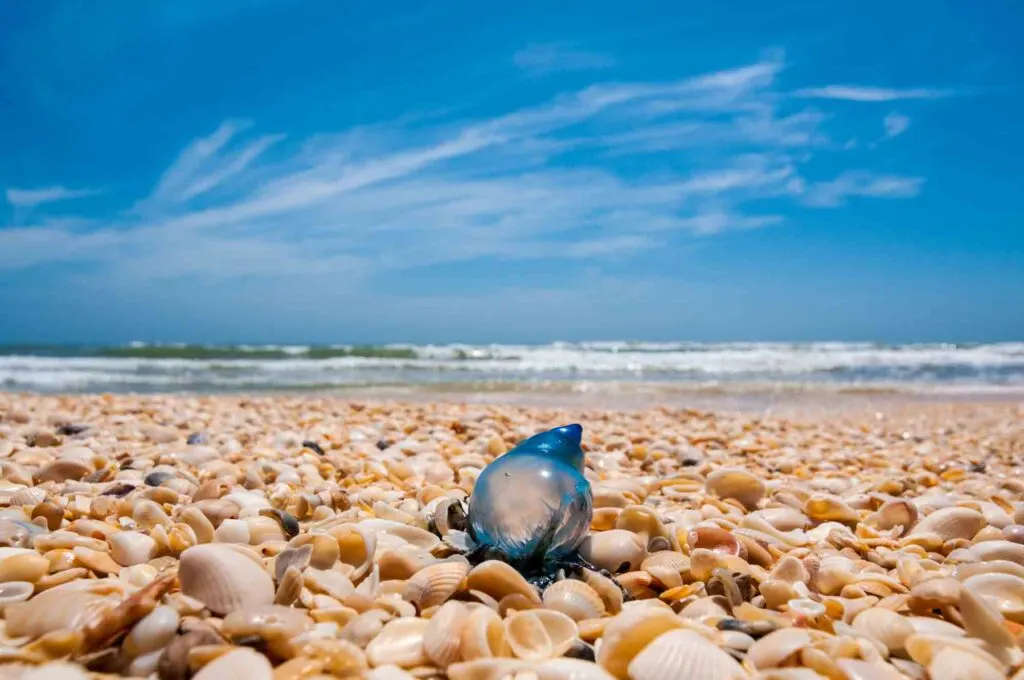
Despite the name, the man of war isn’t a jellyfish. Rather, the species is a hydrozoan.
They’re an entirely separate class of aquatic animals. The tentacles of the species can sting you long after the species is dead.
Additionally, their name is a result of an old wooden ship for war with the same shape.
Mountain Goat
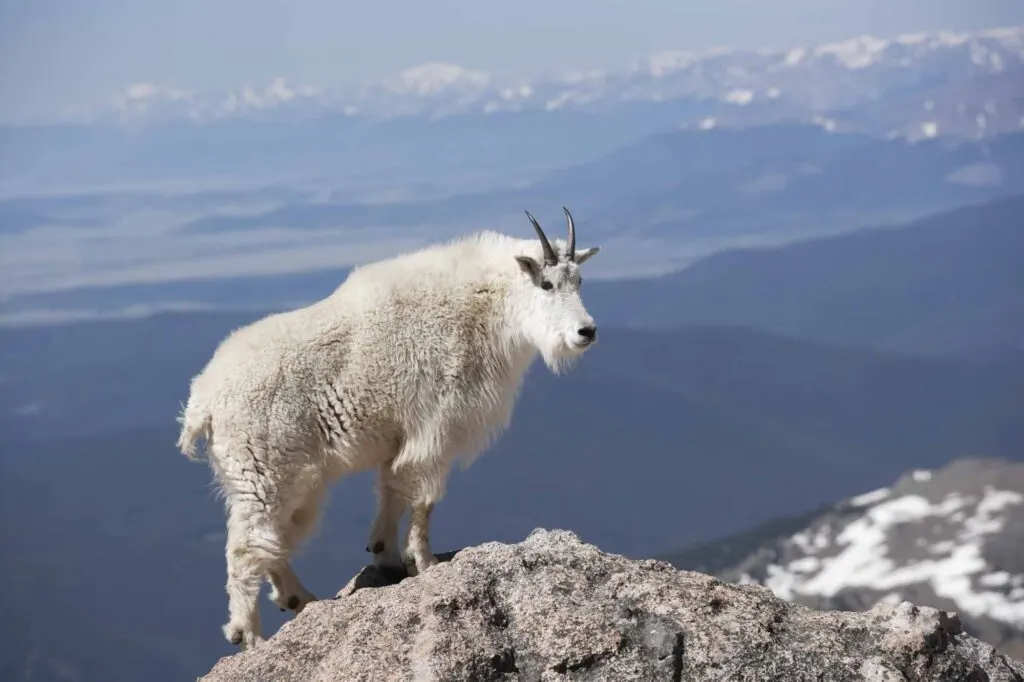
The mountain goats aren’t actually goats, rather, they’re between goats and antelopes.
They have hoofed toes and a largely white body suiting the mountains. They’re seen climbing mountain cliffs and ice. They’re also capable of jumping 12 feet in one go.
Mountain goats are found in North America, more precisely, on the west coast.
Madagascar Hissing Cockroach
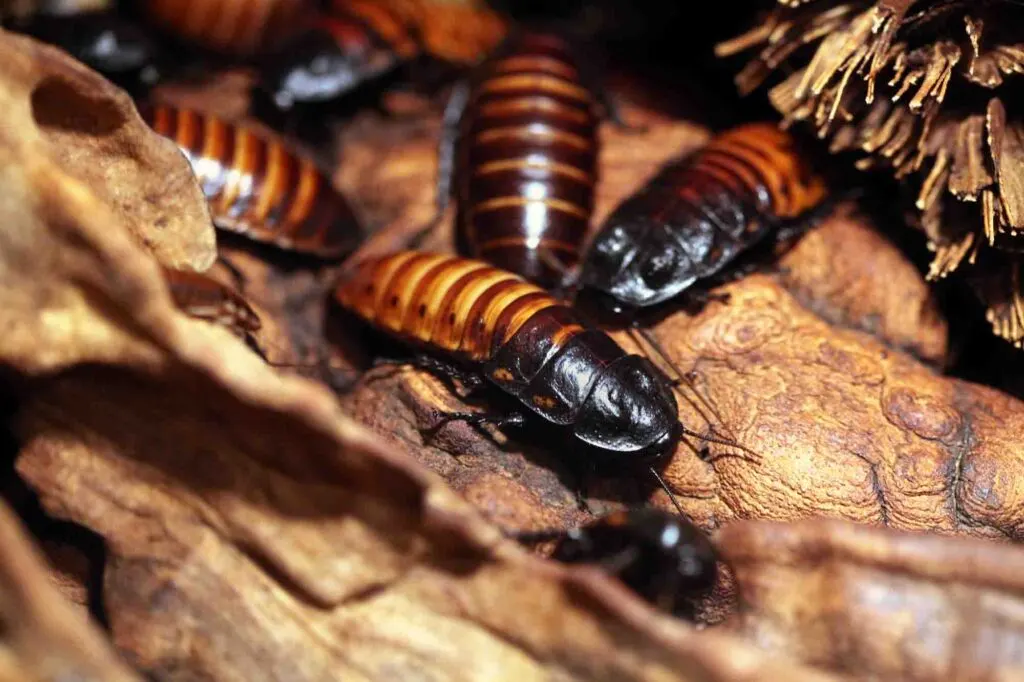
The last of the animals that start with M, the Madagascar hissing cockroach is one of the largest cockroach species to graze the Earth.
They’re about 2 inches in length, and they do, indeed, hiss. Every Madagascar hissing cockroach has a hissing sound unique to them.
Animal Alphabet List
Animals With M
We hope you enjoyed this fun animal list! Feel free to share it with your friends on social media.
Are we missing any animals beginning with M? Then let us know in the comments!
